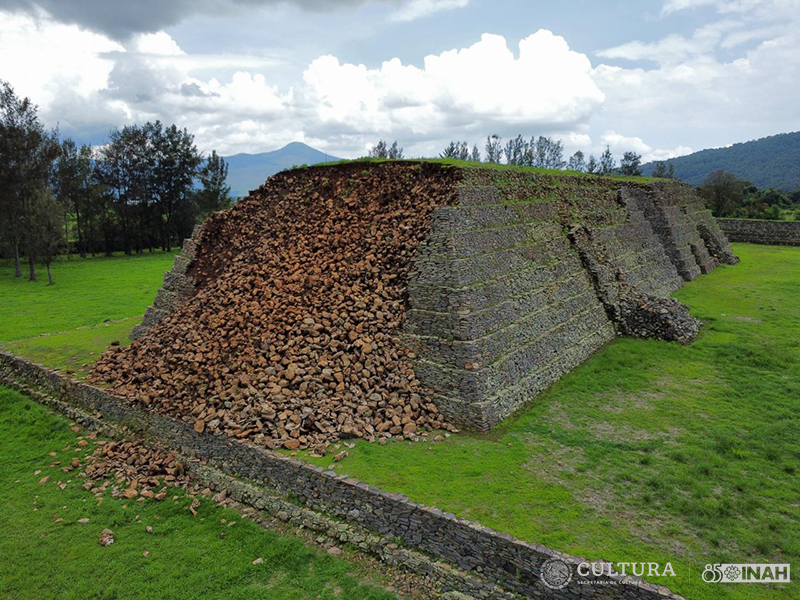A deluge of heavy rain near Lake Pátzcuaro has triggered the collapse of an ancient pyramid in Mexico, just days after the iconic “Double Arch” in Utah’s Glen Canyon National Recreation Area came crashing down into Lake Powell. Both victims of an increasingly wild global climate, according to some, this could also be an indication of impending trouble.
The structure, located in the Ihuatzio Archaeological Zone in Michoacán, had recently been baked by temperatures, causing cracks that allowed water into its interior. On the night of July 29, it was then doused with a downpour of heavy rain, causing the central part of its southern facade to fall, according to Mexico’s National Institute of Anthropology and History (INAH).
Very swiftly, experts from the agency swooped in to address the problem.
“Beginning in the early hours of July 30, personnel moved to the heritage site to assess the damage caused,” INAH said in a statement. They confirmed damage to at least six stepped sections of the south base of the pre-Hispanic monument, affecting both exterior walls and the interior core and walls.
At its peak, Ihuatzio covered approximately 150 hectares and housed at least 84 structures, seven of which are currently on display at the archeological park. The settlement was first occupied in 900 CE by Nahuatl-speaking groups, but its glory days were between 1200 and 1521 CE when it served as the first seat of the Purépecha empire.

The INAH is taking care of the foundations of the Ihuatzio Archaeological Zone after a collapse.
Image credit: Ramiro Aguayo/INAH
This civilization was a contemporary and major rival of the mighty Aztec Empire. Many battles were fought between the two Mesoamerican superpowers, but the Purépechas remained one of the only Indigenous groups in the region that the Aztecs failed to conquer.
The pyramidal structures at Ihuatzio were sacred spaces, most likely used for spiritual rituals and ceremonies. They also held some political role, acting as a powerful symbol of the culture’s power and authority.
Purépecha people still live in parts of Michoacán state in western Mexico and have commented how their historical traditions may have seen the structure’s fall as a sign of impending doom.
Tariakuiri Alvarez, who referred to the builders of the pyramid as ancestors in a Facebook post, described how this would have been considered a bad omen, indicating “that some event is approaching.”
“Before the arrival of the conquistadores, according to historical accounts, something similar happened to the Purhé [Purépecha] worldview of that time because the gods Nana Kuerhaépiri and K’eri Kurikweri were displeased,” the translated post says.
It’s a good thing we’re not superstitious…
Source Link: Ancient Pyramid Collapses After Storm In Mexico, Just Days After Archway Collapses In US